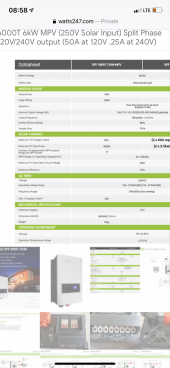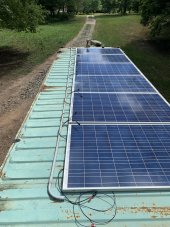Mannfamilywoodworks
Solar Enthusiast
Hi I recently purchased some panels. I got 6 @ 235w each.
I’m planning on hooking them
All up in series and then hooking directly into my growatt 6000t inverter.
I’m going to include the specs for the panels and the specs for the inverter.
I just wanted to know if anyone can confirm that this is correct.
235x6=1,410w
The 6000t says it’ll handle 60-245vdc?
How do I calculate my vdc?
Also do I need any type of disconnect device between the inverter and pv array?
I’m at Home Depot looking at products and wire now.
I was going to use a 10 gauge stranded wire. Will this work?
I’m planning on hooking them
All up in series and then hooking directly into my growatt 6000t inverter.
I’m going to include the specs for the panels and the specs for the inverter.
I just wanted to know if anyone can confirm that this is correct.
235x6=1,410w
The 6000t says it’ll handle 60-245vdc?
How do I calculate my vdc?
Also do I need any type of disconnect device between the inverter and pv array?
I’m at Home Depot looking at products and wire now.
I was going to use a 10 gauge stranded wire. Will this work?





